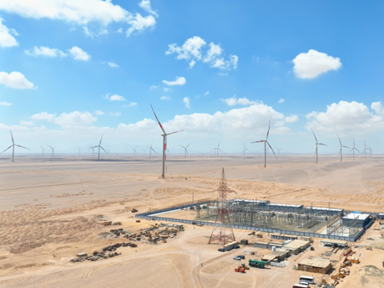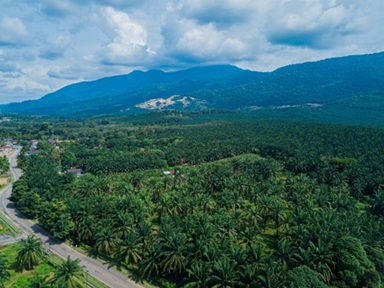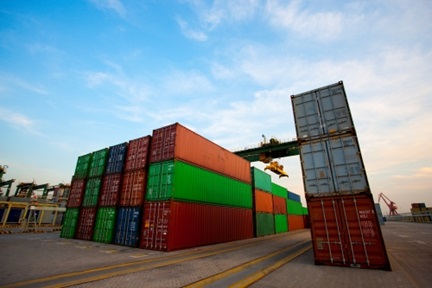Agriculture takes centre stage in Africa
Climate change, access to finance and lack of investments in the African agriculture sector has impacted food security adversely.
by Johan Burger

ORGANIC FERTILISER FACTORY COMES UP IN RWANDA
Slovak firm Rokosan is setting up a US$23.4m organic fertiliser factory in Bugesera which will use poultry feathers, cattle hooves, and horns as raw materials. The factory is expected to produce 20m litres of organic fertilizer once it becomes operational in 2022. It will generate employment for 150 Rwandans and help improve agriculture productivity. The government wants to increase the use of fertiliser from 46kg per hectare to 75kg per hectare by 2024. In addition to producing fertilizers the facility will also conduct soil and crop analysis.
REALITY CHECK: AFRICA’S FOOD PRODUCTION
A recent article published by two development economists rebuts the much-publicised claim that Africa is unable to feed itself, despite Sub-Saharan Africa’s (SSA) 2019 food import bill of US$43 billion.
Authors Louse Fox and Thomas Jayne note that since 2011, SSA’s food imports declined slightly, then levelled. The AfDB projection of Africa’s food imports reaching US$90 billion by 2030 was based on 2000-2010 trends. As global food prices during this era rose rapidly, the AfDB model does not accurately reflect the 2011-2019 period during which the value of SSA’s food imports was relatively flat due to SSA’s expanding food production.
They find that while SSA does import more food today than it did two decades ago, the region now exports more. Over the past four years, SSA imported approximately US$40 billion per year while it exported US$35 billion. Some of SSA’s countries, e.g. Côte d’Ivoire, Ghana, and Kenya, have become agricultural export powerhouses, with a net annual agricultural trade surplus of more than US$5 billion. SSA mainly exports commodities such as cocoa, coffee, tea, and cotton, while its main food imports are wheat, rice, soybeans, other oilseeds, and frozen meat products.
Countries that export oil and minerals and conflict-ridden states are responsible for most of SSA’s net agricultural trade deficits. Nigeria is a net agricultural importer of over US$5 billion annually, while Angola, the DRC, and Somalia together account for another US$5 billion annually. Most of the region’s fragile states are also net agricultural importers.
The demand for food will grow with Africa’s population and increasing wealth, say the authors. This rising demand can stimulate intra-African trade, which averages only 20% over the past decades. South Africa accounts for over a third of the intra-African food trade. Assuming effective implementation, the AfCFTA should help Africa’s farmers and agribusinesses meet the region’s growing demand for food.
To exploit the opportunities for intra-African agricultural trade, they recommend that Africa’s farmers improve their productivity to compete against low-cost imports from abroad. Africa’s governments will have to reduce the costs of cross-border business by removing tariff and non-tariff barriers, streamlining customs procedures, and improving regional transport links.[1]
Despite having 60% of the world’s uncultivated arable land more than 250 million Africans still go hungry. In fact, 55% of the world’s hungry live on the continent. This is despite being in Africa.
In May 2021 seventeen heads of state in Africa attended a high-level virtual ‘Dialogue on Feeding Africa’ to debate the issue of malnutrition and hunger. They pledged more investment in agriculture and vowed to eliminate hunger within the next decade. The gathering identified land tenures, poor soil conditions, erratic rains and changing weather patterns and poor post-harvest handling facilities and as the primary cause of low agriculture productivity. Stemming post-harvest losses could feed 48m people every year in SSA. African farms needs eight times more fertiliser and six times more seed to meet their potential. Significant investments are needed in post-harvest handling, including storage and processing. Even though agriculture shows a higher ROI than any other sector African governments are yet to prioritise investment in this sector. Food imports are projected to reach US$100bn by 2030.
Major commitments made towards achieving food security on the continent include the Maputo Declaration of 2003 and the Malabo Declaration of 2014. In the Maputo Declaration, African governments pledged to spend 10% of their national budgets on agriculture and local development. Very few met this commitment. At the Malabo Declaration governments once again reiterated their earlier commitment to target 10% of their public spending on agriculture and ending hunger by 2025. Only four (Rwanda, Morocco, Mali, and Ghana) out of the 49 members states are on-track to achieve their commitments thus far. Very few countries have met these goals.
Africa has the lowest levels of agro-processing globally due to its reliance on exporting raw commodities. Challenges facing farmers include poor roads and infrastructure in Africa, complex political systems, vested interests in powerful lobby groups, and the presence of multiple agencies in the development of the agriculture sector.
There are, however, large corporate agriculture investors from Asia such as Singapore’s Olam and Wilmar that are trying to make a difference by supporting local smallholder farmers with tools, training and credit under their outgrower programmes. Other Asian firms like Indorama and Asiatic Agricultural Industries produce fertilisers in Africa.
ENHANCING AGRO-PROCESSING IN KENYA
Kenya loses almost half its farm produce due to lack of adequate agro-processing facilities. But in a major step that could result in the stemming of such loss the Kenyan government is establishing six agro-processing zones across the country. Agro-processing currently contributes 2.4% to national employment and 3.2% to Kenya's GDP, while accounting for 8.5% of exports.
Agro-processing is viewed as a game changer, allowing investors to work with farmers to reduce food waste and boost food security. Kenyan agro-processor Sweet ’n Dried has been sourcing fruits, vegetables, spices, and traditional crops from over 3,000 farmers to process into finished goods. The finished products are sold locally in central Kenya and Nairobi and exported to the USA. The factory employs 20 people full-time, and an additional 30 workers during peak season.
POINT OF INTEREST
- The revelation that Africa’s food security situation is not as bad as generally assumed and widely publicised is welcome. However, Africa still imports food products that it need not, such as meat, rice and wheat. It can produce its own products and needs to focus more attention on doing so. The emerging problem is not only quantity but quality. Africa’s population is urbanising and becoming wealthier, with a growing ability to pay for better quality food. Growing Africa’s agricultural productivity has been a theme for decades, with its governments adopting various resolutions to increase budget contributions to agriculture to 10% of their annual budgets. Even after close to two decades, this has yet to take place. It is time for Africa to step up and honour its commitments to a vital sector on the continent. This path would support the development of competence, increase the levels of modernisation and support farmers overall.
- Multilateral financial institutions are an important source of investment for the productive sectors in the agriculture value chain. The AfDB, as part of its Feed Africa strategy, has funded governments to establish agro-processing zones in countries such as Ethiopia, Ghana, Liberia, Nigeria, Sierra Leone, and Tanzania.[2]
- The agro-processing sector provides valuable investment opportunities for foreign investors. Commodity firms based in Singapore and other parts of Asia can expect African governments to use policy to boost investments in agro-processing. Countries such as Nigeria and Rwanda have already introduced prohibitions on the export of unprocessed raw commodities. Others may follow suit.
RWANDA TARGETS US$1 BILLION IN AGRI EXPORTS
Rwandan agricultural exports declined sharply in recent years. This decline was due mainly to trade disruptions caused by the Covid-19 pandemic and lower volumes, and sagging prices in international and regional markets. Its agricultural exports declined from US$515.9 million in 2017/2018 to US$419.1 million in 2019/2020. Rwanda now seeks to recover by doubling its annual agricultural exports to generate US$1 billion in revenue by 2024. Reaching this aggressive target will require addressing several significant challenges.
To do that, Rwanda must first diversify its exports beyond its traditional trade in coffee and tea to improve its resilience to international commodity price shocks. This will require a focus on promoting non-traditional export crops such as horticulture and animal products. However, the sector should continue to export high-value fresh products (French beans, snow peas, passion fruits, chillies, and cut flowers). Rwanda would also benefit from a shift to higher-value speciality tea and coffee.
The sector also needs to expand its market base. Ensuring sustainable and well-paying markets will require developing market linkages with big buyers through forward contracts. Rwanda’s National Agricultural Export Development Board (NAEB) attracts big investors with a global presence, such as Unilever. This link should increase the competitiveness of Rwandan agri-products. NAEB also deploys an e-commerce trading platform for various commodities.
Improving transport logistics and value addition can help achieve sector targets. High airfreight charges negatively impact the profits of horticulture exporters and farmers. A focus on value addition should lead to higher returns, as would growing produce that have long shelf-life. These investments would also enhance opportunities presented by the AfCFTA.
The Government must increase budgetary allocation to the sector.
POINT OF INTEREST
- Rwanda wants to double its agriculture export revenues. This move is worth emulating by the rest of Africa. However, this kind of stretch goal requires a more comprehensive approach. Reaching such a goal is much more complex than merely stating an intention. Here we see yet another reason for Africa to actually implement its resolution to allocate 10% of its budgets to agriculture. In addition to increasing food exports, it also has the potential to secure food security. However, Africa must increase food production and exports and create more opportunities for value creation along the entire value chain. Rwanda’s stated intention is welcome, and while punted for some time, unfortunately not yet embraced to the fullest extent.
CURTAILING FOOD IMPORTS IN TANZANIA
Tanzania is making an effort to reduce its dependence on agricultural imports. Imported products include cooking oil, wheat and sugar. All could be locally produced from crops grown in Tanzania. Tanzania was spending ±US$202.6 million annually on importing cooking oil, which could be reduced or abolished by increasing the production of crops such as sunflower and palms to produce edible oil. Tanzania was spending ±US$444,000 on importing wheat flour annually. Increasing local production of this crop would eliminate this expenditure of foreign currency.
Any shift in crops requires educating farmers on engaging in agribusiness. Such education would also help them address poverty while contributing to Tanzania’s economic growth.
According to the chairman of the Parliamentary Standing Committee on Agriculture, Livestock and Water, Charles Mwijage, unless the government invests massively in the agricultural sector, developing an industrial economy would not be realised soon.[3]
POINT OF INTEREST
- Tanzania’s decision to limit food imports is a course of action that requires caution. Nigeria attempted similar initiatives in the 1980s and as recently as 2019. But this only led to smuggling and price rises. Tanzania reportedly requested its agricultural experts to formulate plans to boost local production of critical products as an alternative to imports. This seems a good way to go. It has the potential to increase its agriculture output and produce its own stockpiles of various crops. This strategy should be viable versus banning food imports.
TANZANIA LIBERALISES ITS DAIRY SECTOR
The Tanzanian government has opened its dairy industry to foreign investors. The country produces 3.4bn litres of milk annually, of which only 75m litres is processed. In a bid to capture more value and reduce its dependence on imported dairy products, the government of Tanzania is now trying to attract investors to the sector. The factors that have held back the growth of dairy in Tanzania are familiar – lack of modern production practices, high costs, and lack of access to new technologies.[4] According to the report, Dairy Processing in Tanzania[5], other factors that inhibited dairy productivity included inefficient cold chain facilities, seasonal fluctuations in milk supply, electricity shortages, high cost of transport, and lack of financing. These issues can be addressed through more public and private investments. The opening up of the sector to foreign investors is, therefore, a step in the right direction.
Additional Readings
Anon. 2021. Let’s abolish agricultural product imports – PS. Daily News. 31 January 2021. Available at https://dailynews.co.tz/news/2021-01-3060156f5f992b5.aspx. Accessed 19 April 2021.
Fox, L. and Jayne, T.S. 2021. Unpacking the misconceptions about Africa’s food imports. The Africa Logistics. 11 January 2021. Available at https://www.theafricalogistics.com/2021/01/11/unpacking-the-misconceptions-about-africas-food-imports-2/. Accessed 19 April 2021.
Ntirenganya, E. 2021. How can Rwanda achieve its $1bn target in agric exports? The New Times. 2 February 2021. Available at https://www.newtimes.co.rw/news/how-can-rwanda-achieve-its-1bn-target-agric-exports. Accessed 19 April 2021.
Kamagi, D. 2021. Govt tells investors to explore dairy’s vast opportunities. Daily News. 4 July 2021. Available at https://dailynews.co.tz/news/2021-07-0360e097c792a2b.aspx. Accessed 19 July 2021.
Lunogelo, H., Makene, F. and Gray, H. 2020. Dairy Processing in Tanzania: Prospects for SME Inclusion. Project Brief, April 2020. Available at https://esrf.or.tz/wp-content/uploads/2021/05/Tanzania-Dairy-Brief.pdf. Accessed 19 July 2021.
Kairu, P. 2021. How African food systems continue to meet most basic need. Daily Monitor. 15 May 2021. Available at https://www.monitor.co.ug/uganda/special-reports/how-african-food-systems-continue-struggle-to-meet-most-basic-need-3401410. Accessed 20 August 2021.
Njagi, D. 2021. Kenya’s attempt to boost ago-processing. Devex. 29 June 2021. Available at https://www.devex.com/news/kenya-s-attempt-to-boost-agro-processing-100105. Accessed 20 August 2021.
Nkurunziza, M. 2021. European investors to establish €20m factory for organic fertilizers. The New Times. 6 July 2021. Available at https://www.newtimes.co.rw/business/european-investors-establish-eu20m-factory-organic-fertilizers. Accessed 20 August 2021.
References
[2] https://www.devex.com/news/kenya-s-attempt-to-boost-agro-processing-100105








